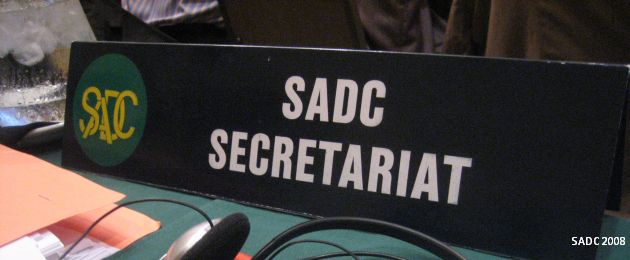
Plant Breeders rights became an accepted branch of intellectual property with the adoption of the International Convention for the Protection of New Varieties of Plants (UPOV) in 1961.
The Convention protects the variety of the plant not the plant itself therefore the subject matter of protection is the variety and not the whole plant. A variety is a new plant that is distinct from any other variety that is known to agriculture or published in any botanical literature. A variety is ‘known to agriculture’ if man has cultivated it. A variety is ‘known to botanical literature’ if it has been recorded. Therefore any person who discovers a new plant variety that is wild, that man can use or domesticate, can apply to the competent authority for a Grant of a Plant Breeder’s Right.
The UPOV Convention 1961 was subsequently amended in 1978 and 1991. Kenya was the first country in Africa to domesticate the UPOV Convention. Kenya’s Seed and Plant Varieties Act Chapter 326 is modeled on UPOV 1961. South Africa’s Plant Breeders’ Rights Act 1976 is modeled on UPOV 1978. For a practical look at the protection of plant breeders rights in South Africa, this blogger has previously discussed the recent High Court decision in Voor-Groenberg Nursery CC and Another v Colors Fruit South Africa (Pty) Ltd [2012].
Recently, it has been widely reported (see: here, here and here) that over 80 civil society organisations from the Southern African Development Cooperation (SADC) region and beyond have prepared a detailed submission to the SADC Secretariat calling for the rejection of the SADC Draft Protocol for the Protection of New Varieties of Plants. One of the key contentions raised by these civil society groups was that the Draft Protocol is modeled on the “one-size-fits-all” UPOV 1991. UPOV 1991 abolishes the farmers’ privilege in UPOV 1978 which allowed farmers to use the harvested material from plant varieties as propagating material but this privilege can be withdrawn at any time. Looking at Article 27 of the Draft Protocol, the farmer’s exception is limited in scope as it “only allows an exception for subsistence farmers.”
Furthermore, all countries acceding to UPOV 1991 were required to protect at least 15 plant genera and species for the first 10 years, whereas the draft protocol requires protection of all plant genera and species and does not provide for any transition period.
UPOV 1991 also introduces the concept of an essentially derived variety (EDV), which is expressly excluded from plant variety protection. This concept was intended to address the problem of new breeders that would modify an existing variety and seek to have such a variety protected under plant breeders rights. With the concept of EDV, any plant variety claimed to be new but whose essential characteristics or features are similar to existing plant varieties shall not be deemed to be new. The same concept of EDV can be found at Article 26(3) of the Draft Protocol.
Thus, the Draft Protocol, like UPOV 1991, is perceived as a move to strengthen the hands of the breeder to the detriment of the farmer by allowing greater privatisation of seeds and plant material.
The fundamental question which arises in this context is the role of IP in food security. The exceptions made for farmers are intended to be the last safety valve for the developing countries as well as a key balancing factor on the issue of food security. However, poor farmers under UPOV 1991 are required to buy seeds even for subsistence farming. The consequence is that farmers are now using low quality seeds for planting because they can no longer access the original seed. This has led to cases of low yield, famine and malnutrition all partially blamed on IP system.
In the early 1990s, plant breeding was a thriving industry involving not only by individuals but also multinationals like Monsanto, pharmaceutical companies like GlaxoSmithKline and even national parastatals like the Kenya Agricultural Research Institute (KARI). This period also saw the emergence of genetic use restriction technologies (GURTS) popularised by Monsanto. For instance, the one generational seed also know as ‘terminator seeds’ were seeds that were inserted with a gene that meant farmers could only plant the seeds once, thereafter it would only produce weeds.
This campaign to strengthen plant breeders rights and curb infringement by farmers, in the early 1990s culminated in the 1994 TRIPS Agreement of the WTO. Article 27 paragraph 3(b) expressly stipulates that all member states shall provide for the protection of plant varieties either by patent or by an effective sui generis system or a combination thereof. Sui generis in this context has been interpreted to mean either UPOV 78 or UPOV 91 or any other effective system.
Civil society organisations opposed to the draft SADC protocol argue that this flexibility in Article 27(3) of TRIPS has been removed without taking into account the different types and needs of farming systems within the SADC region. This blogger is persuaded by the argument by civil society and refers to TRIPS which makes it optional for WTO members to either opt for UPOV or a sui generis system for protection. This blogger argues that given the socio-economic differences among SADC member countries, a sui- generis mechanism would be better suited for plant variety protection within the 15 member states of SADC. The process of developing a sui generis system would allow for wider consultations between plant breeders and farmers with the aim of arriving at a mutually satisfactory balance between the various rights and interests involved.
Given the legally binding nature of protocols generally, this blogger argues that SADC member countries must seriously consider the submissions of the civil society before deciding on whether to adopt or reject the Protocol. Once the Draft Protocol is ratified by two thirds of the member states, it becomes a legally binding document committing all SADC Member States to the objectives and specific procedures stated within it.